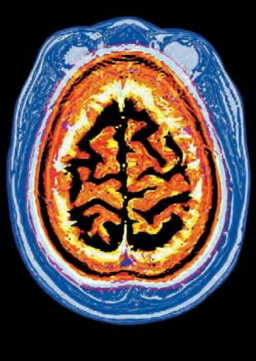MIND – BRAIN OR MIND – BODY PROBLEM
Thus was born a conundrum that has sparked debate for many centuries. It’s called the mind-body or mind-brain problem. Attempts to solve the problem had to await the rebirth of the Renaissance. Direct observation and systematic testing of hypotheses provided the keys. The first direct, systematic observation of the human brain occurred in the 1300s when Italian medical schools began allowing human cadavers to be dissected. Authorizations came slowly at first, with one university permitting only one male and one female body to be cut up each year. With time, however, human autopsies became more commonplace. Leonardo da Vinci (1452-1519) drew his extensive knowledge of anatomy from dissecting bodies. He fashioned a wax cast of an ox brain and assigned functions such as imagination, reason, and mem- ory to its various parts. Without a way to test his hypothesis, how- ever, he left room for disagreement
Are you a morning or evening ” person? Your brain is wired to prefer one or the other.
about what he observed. Critics said the part of the brain Leonardo assigned to the function of imagination was more likely related to sensation. As it was close to the sense organs, they said it must be the home of Sensus Communis, or common sense.
COGITO , ERGO SUM
More than a century later, mathematician and philosopher Rene Descartes aimed to ascertain more about the brain, and with greater clarity and certainty. The way to ascertain things with certainty, he believed, was to break them into their smallest parts and solve the pieces first.
Descartes began in the 1620s by addressing how humans know about the world. He wondered whether he could trust the reality he perceived with his senses. Such questions flourished in an age when Galileo and Copernicus were rewriting the laws that governed the movement of celestial bodies. Descartes knew that the rising and setting of the sun were functions of the Earth’s rotation instead of the physical movement of the sun around the Earth, but his eyes tricked him into believing the sun actually rose in the east and set in the west. To get at the heart of how he could know something with certainty, Descartes sat inside a Dutch inn and pondered the nature of knowledge. He looked at the furniture and asked himself how he could know for certain it existed. The answer: he could not. All he could settle on was that his
- A 17-century Jamestown colony skull shows signs of brain surgery.
- William Macewen removed a tumor from a young woman’s brain in 1879. She survived the surgery.
- American physician Harvey Cushing (1869-1939) removed more than 2,000 brain tumors.
- Portuguese doctor Antonio Egas Moniz performed the first prefrontal lobotomies on humans in the 1930s. While the surgery, which cut key fibers in the frontal lobes, had the desired effect of calming agitated patients, it also drained them of emotion. Lobotomies now are considered radical procedures.
perception of the furniture existed. His consciousness, his awareness of the world, lay beyond the pale of any doubt. Cogito, ergo sum: I think, therefore I am, he said, and thus the ultimate reality of the world lies in the mind’s perception of it. To Descartes, if a tree falls in a forest and there is nobody there to hear it, the lack of perception guides the answer as to whether it makes any sound.
DESCARTES DISSECTS
Not content to just consider the function of the brain, Descartes began to physically examine brain and nerve specimens to gather more data. He bought the car-casses of slaughtered animals at the butcher shops of Amsterdam and dissected them to learn more, through his observation, about the brain, nerves, and body. “These are my books,” he told visitors who asked to see his library.
Despite adopting first principles that demanded SKEPTICISM, Descartes took some leaps of faith as he examined brain and body. He considered nerves to be tubes that swelled and pulsated with living spirits, which pushed and pulled at muscle tissue. Nerves swollen with animal spirits could pull a foot back from a fire or turn the gaze from one object to another. Much of the action of movement was pure reflex, he said, carried out independent of will. (It’s not hard to see where this idea arose: Push your fingertip into a candle flame and see whether the idea to remove it occurs before you yank it back to safety.) According to Descartes, mechanical operations of the body and brain, working like an elaborate clock, recorded images through the eyes, engraved memories in the mind, and moved the body through the coordination of nerves.


